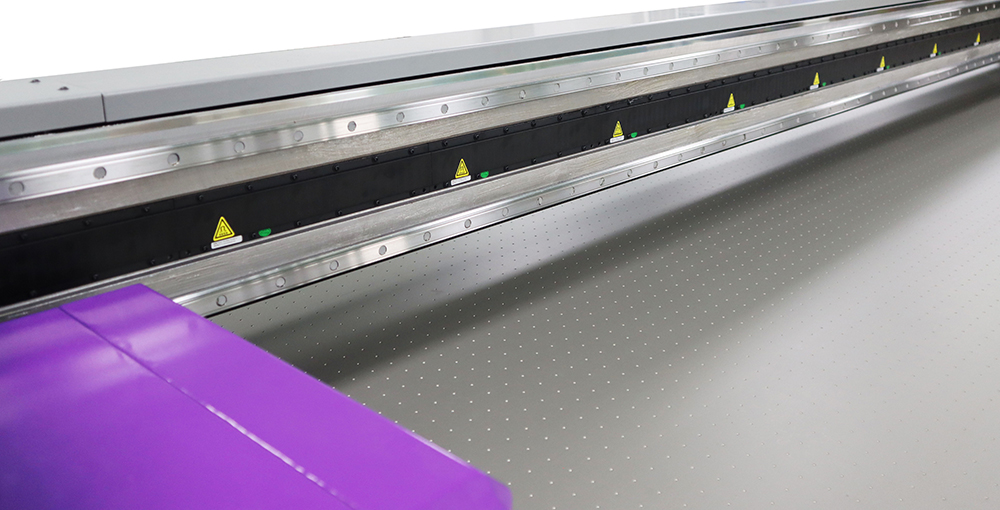UV Flatbed Printer: Applications in Product Prototyping
UV Flatbed Printer: Applications in Product Prototyping
In the realm of product development, prototyping stands as a pivotal phase that bridges the gap between conceptualization and final production. It is during this stage that designers and engineers can tangibly test their ideas, identify design flaws, and refine their creations before committing to expensive, full-scale manufacturing. Among the myriad of technologies that have revolutionized prototyping, UV flatbed printers have emerged as a game-changer, offering unprecedented precision, versatility, and speed. This article delves into the applications of UV flatbed printers in product prototyping, exploring how they facilitate rapid iteration, enhance design quality, and streamline the overall development process.

Understanding UV Flatbed Printers
UV flatbed printers are a type of digital printing technology that utilizes ultraviolet (UV) light to cure or dry ink instantly after it is deposited onto a substrate. This process enables the printer to produce highly detailed and durable prints on a wide range of materials, including plastics, metals, glass, wood, and even some textiles. The key advantage of UV flatbed printers lies in their ability to print directly onto rigid surfaces without the need for pre-treatment or post-processing, making them ideal for prototyping applications where time and material efficiency are crucial.
Applications in Product Prototyping
Rapid Prototyping of Functional Parts
UV flatbed printers can produce functional prototypes with intricate designs and complex geometries, allowing engineers to quickly assess form, fit, and function. This capability is particularly valuable in industries such as automotive, aerospace, and electronics, where precise component dimensions and material properties are paramount. By enabling the rapid production of prototypes that mimic the final product’s characteristics, UV flatbed printers accelerate the validation process and facilitate early-stage testing, reducing development cycles.
Design Verification and Iteration
The ability to print directly onto various materials makes UV flatbed printers invaluable for verifying design aesthetics and functionality across different surfaces. Designers can experiment with various textures, colors, and finishes, gaining instant feedback on how these elements interact with the product’s form and intended use environment. This iterative process fosters creativity and innovation, enabling teams to refine their designs swiftly based on tangible, real-world feedback.
Prototyping of User Interfaces and Graphic Overlays
UV flatbed printers excel at producing high-resolution graphic overlays, labels, and user interface components, making them indispensable for prototyping devices with interactive displays or control panels. From smartphones and tablets to industrial machinery, these printers can accurately reproduce intricate icons, text, and images, ensuring that the prototype’s user experience is as close as possible to the final product. This capability is crucial for user testing and market validation, as it allows for realistic simulations of product interactions.
Packaging Prototypes
Packaging design is a critical aspect of product development, influencing consumer perception, brand identity, and product protection. UV flatbed printers enable the creation of high-quality packaging prototypes that accurately represent the visual and tactile qualities of the intended final packaging. This includes printing directly onto packaging materials like cardboard, plastic, or metallized films, allowing designers to evaluate the look, feel, and durability of their packaging concepts before committing to expensive production runs.
Customized and Limited-Run Prototypes
In scenarios where prototyping requires customization or limited production volumes, UV flatbed printers offer a cost-effective solution. Their ability to print on demand, without the need for extensive setup or plate-making, makes them suitable for creating personalized prototypes or small batches of products for targeted testing or promotional purposes. This flexibility is particularly advantageous in industries such as fashion, where trends evolve rapidly and customization is key.
Advantages and Considerations
The adoption of UV flatbed printers in product prototyping is driven by several advantages, including:
Speed and Efficiency: UV curing enables instant drying, reducing production time and eliminating the need for drying or curing rooms.
Versatility: The ability to print on a wide range of materials and thicknesses expands design possibilities.
Precision and Detail: High-resolution printing capabilities ensure intricate designs are accurately reproduced.
Cost-Effectiveness: On-demand printing minimizes waste and storage costs, especially during the iterative prototyping phase.
However, there are also considerations to keep in mind:
Initial Investment: UV flatbed printers can be expensive, requiring careful consideration of return on investment.
Material Compatibility: While versatile, not all materials may be compatible with UV inks, necessitating material testing.
Environmental Impact: UV inks and the curing process may have environmental implications that need to be managed.
Conclusion
UV flatbed printers have transformed the landscape of product prototyping, empowering designers and engineers with a tool that combines speed, precision, and versatility. Their ability to produce functional, high-quality prototypes on a variety of materials has accelerated design iterations, facilitated early-stage testing, and enhanced overall product development efficiency. As technology continues to advance, UV flatbed printers will likely play an even more pivotal role in driving innovation and streamlining the transition from concept to market-ready product. For businesses striving to stay competitive in today’s fast-paced market, leveraging the power of UV flatbed printers in their prototyping workflows is a strategic move that promises significant advantages.
